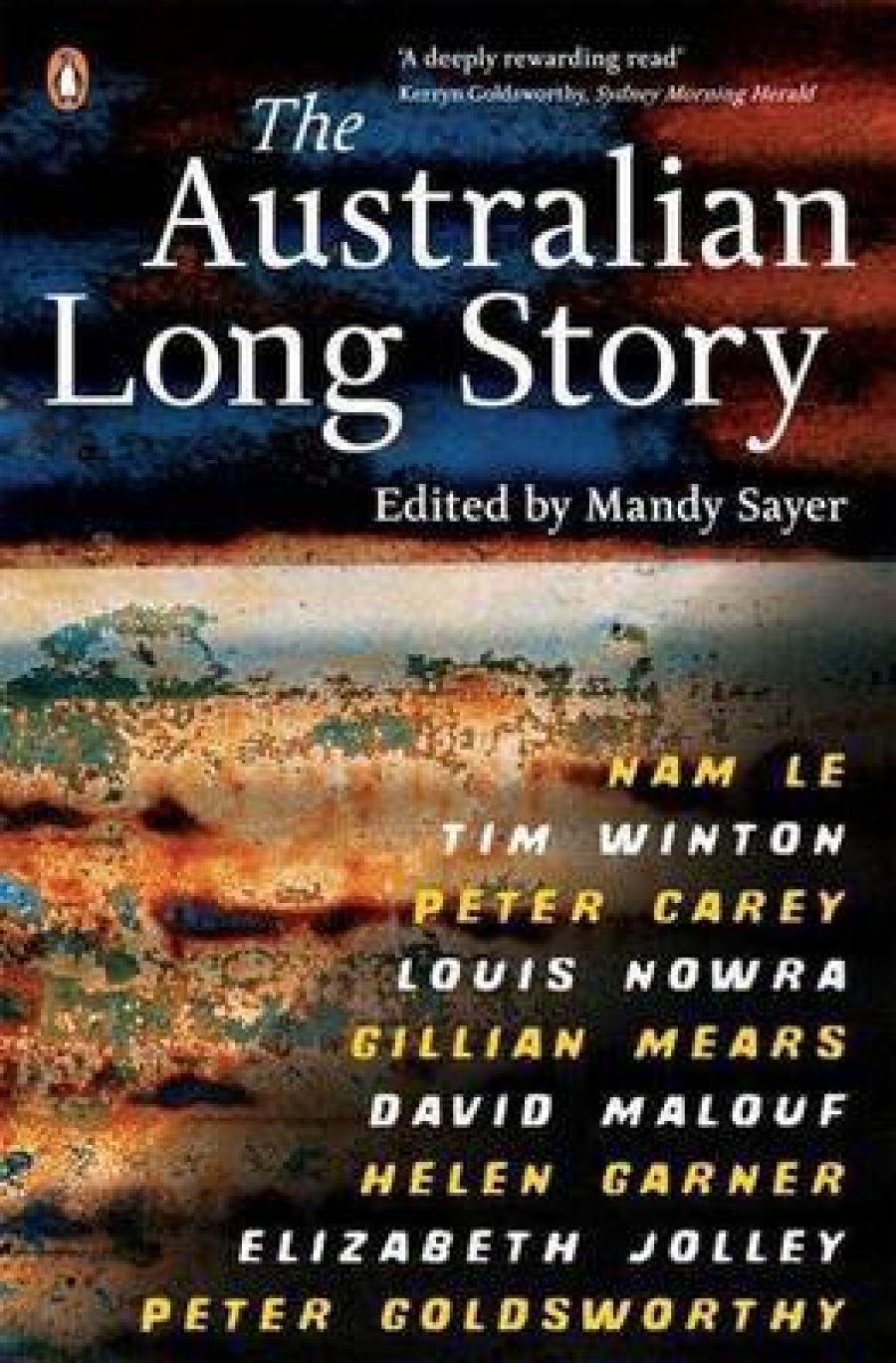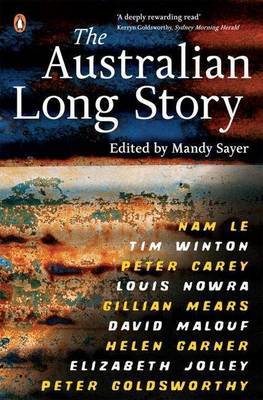
- Free Article: No
- Contents Category: Australian Fiction
- Review Article: Yes
- Article Title: Ebb and flow
- Online Only: No
- Custom Highlight Text:
Literary definitions often have an indeterminate quality. To state the precise formal characteristics of the novel or the short story is almost impossible. There are some basic tenets, but these forms are fluid; open to interpretation and experimentation. Is there, then, any grounds for conceiving of the ‘long story’ as a distinct entity? Caught somewhere between two already amorphous forms, it seemingly occupies a negative space, defined by what it is not.
- Book 1 Title: The Australian Long Story
- Book 1 Biblio: Hamish Hamilton, $39.95 pb, 538 pp
- Book 1 Cover Small (400 x 600):

Sayer identifies the 1970s as a vital period in Australian literary history, when many young writers were keen to transcend the realist boundaries that had been the mainstay for generations before. She notes that stories which previously had to be short in order to be suitable for publication in magazines or journals were changing in style as more authors published story collections where space was not so limited and space available for experimentation. All but two of the nine authors represented in this anthology – Gillian Mears and Nam Le are the exceptions – came to prominence during this period.
There are certainly different pleasures to be had in reading a longer story. Sayer points to ‘the way that it can negotiate the passing of time’, allowing the narrative to ebb and flow. The two best stories collected here, Elizabeth Jolley’s ‘Grasshoppers’ and ‘The Childhood Gland’ by Gillian Mears, both exploit the sense of tension created by disorientation and chronological fluidity. ‘The Grasshoppers’, a menacing tale, explores the cruelties that children and parents inflict on one another. The most dramatic moments in the story occur when the light is fading or the darkness is lamplit; the reader is never sure what time it is, or how much time has passed. Despite this disorientation, the authorial focus is savage and clear, and the length of the story is perfectly judged to let the reader simmer nervously until the end.
‘The Childhood Gland’ also explores the darkness of family life. This is familiar territory for Mears, and her earthy depictions of creekbeds, horses and zealous sisters, tinted with the hyperreal emotion of childhood and adolescence, are emotionally raw, transgressive and seductive. We are aware that time is passing. The girls grow up; their mother dies; there is certainly a linear quality. And yet there is an undertow of immeasurable time, of late dusky afternoons that last for days, of midnight pacts that survive for months. The narrator is allied to this emotionally determined calendar. It is utterly convincing, perfectly paced and pitched. The madness of much of the story might have been too highly coloured in a more confined space; too exhausting to read stretched out to the length of a novel.
The stories by other contributors, including Helen Garner, Louis Nowra, David Malouf, Tim Winton, Peter Carey and Peter Goldsworthy, are similarly impressive in the way they adapt to the longer form. Sayer mentions in her introduction that she was inspired to compile the anthology in part by the publication of Winton’s The Turning (2004) and Malouf’s Every Move You Make (2006). The stories she has selected from both of these authors’ collections are excellent.
The one story in the anthology that I felt was included by virtue of its word count rather than any distinguishing features is Nam Le’s ‘Halflead Bay’. The longest but also the weakest story in Le’s acclaimed début collection The Boat (2008), it appears callow when placed alongside the work of seasoned realists such as Winton and Goldsworthy, as if Le is imitating an idea of realism rather than trying to capture the texture of reality itself. Where the other realist stories gathered for this anthology are remarkable for their craftsmanship and control of the longer lines of narrative, Le’s appears flimsy and vague in comparison. It is the one inclusion that might have worked better pared back to a short story or fleshed out into a novel; as it stands, its dramatic potential is diluted by its length.
It is questionable whether any writer sits down with the intention of composing a long story, in the same way that they might set out to write a novel or a short story. But if a work finds its way into that indeterminate space, as The Australian Long Story demonstrates, the potential for it to evolve into something distinct and compelling is boundless.


Comments powered by CComment